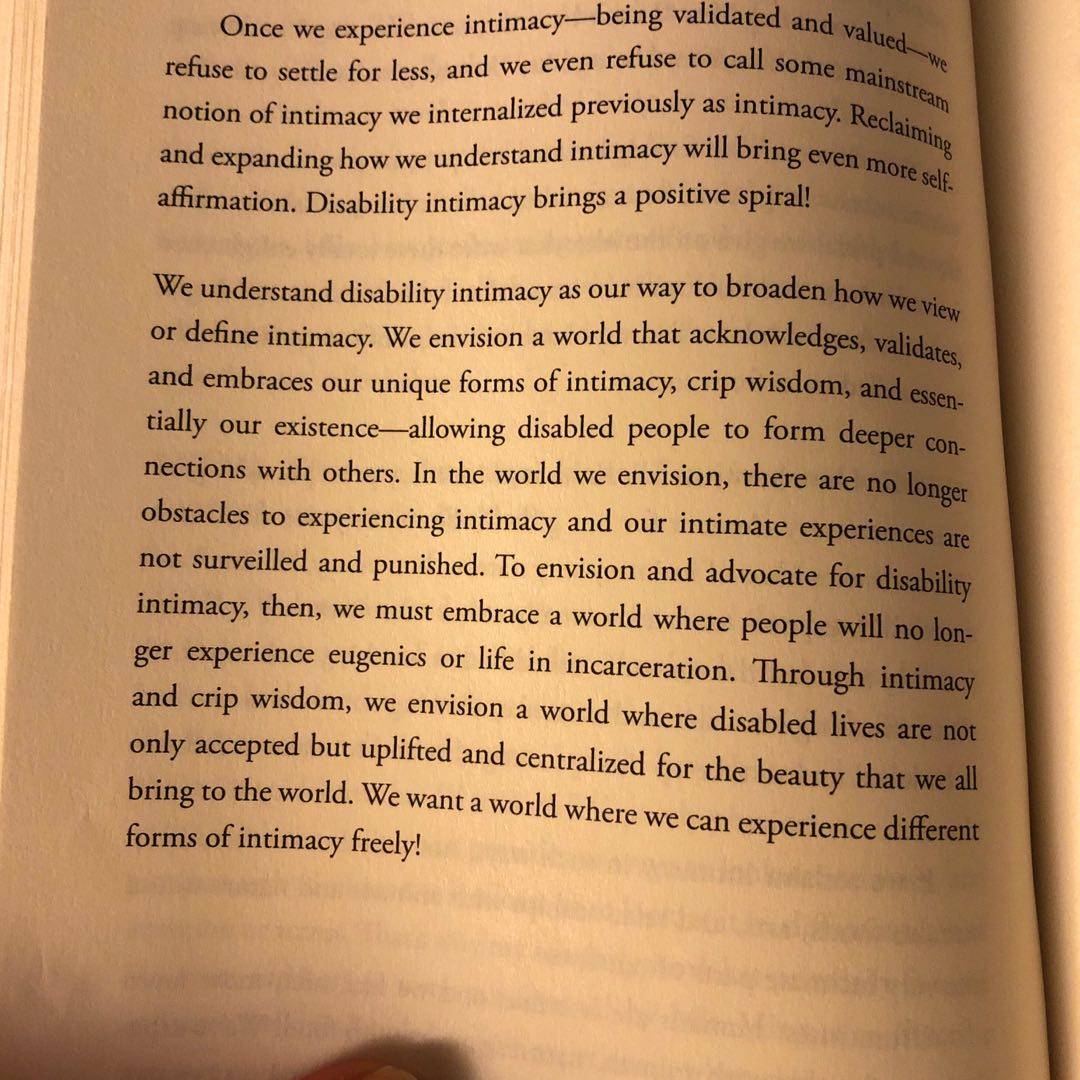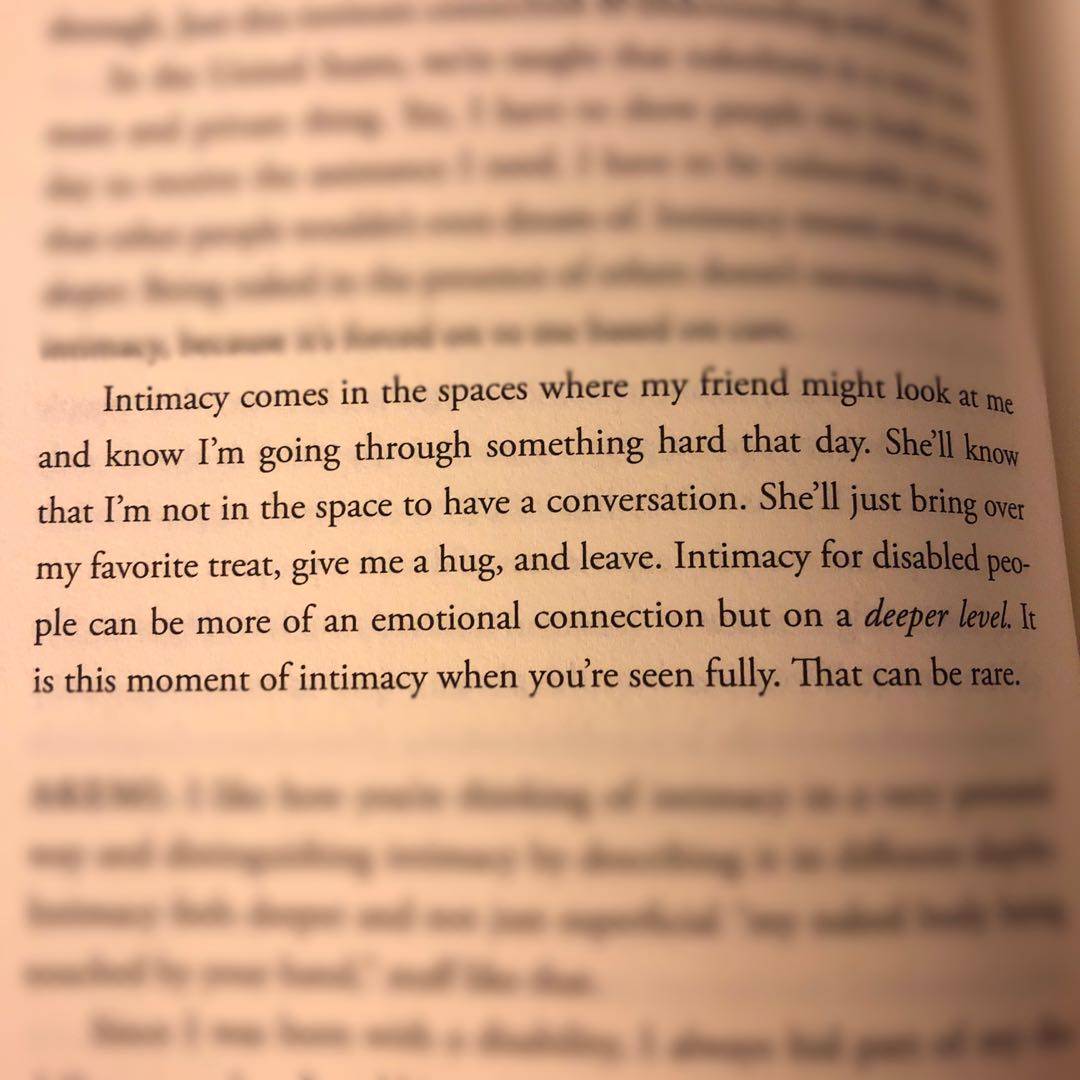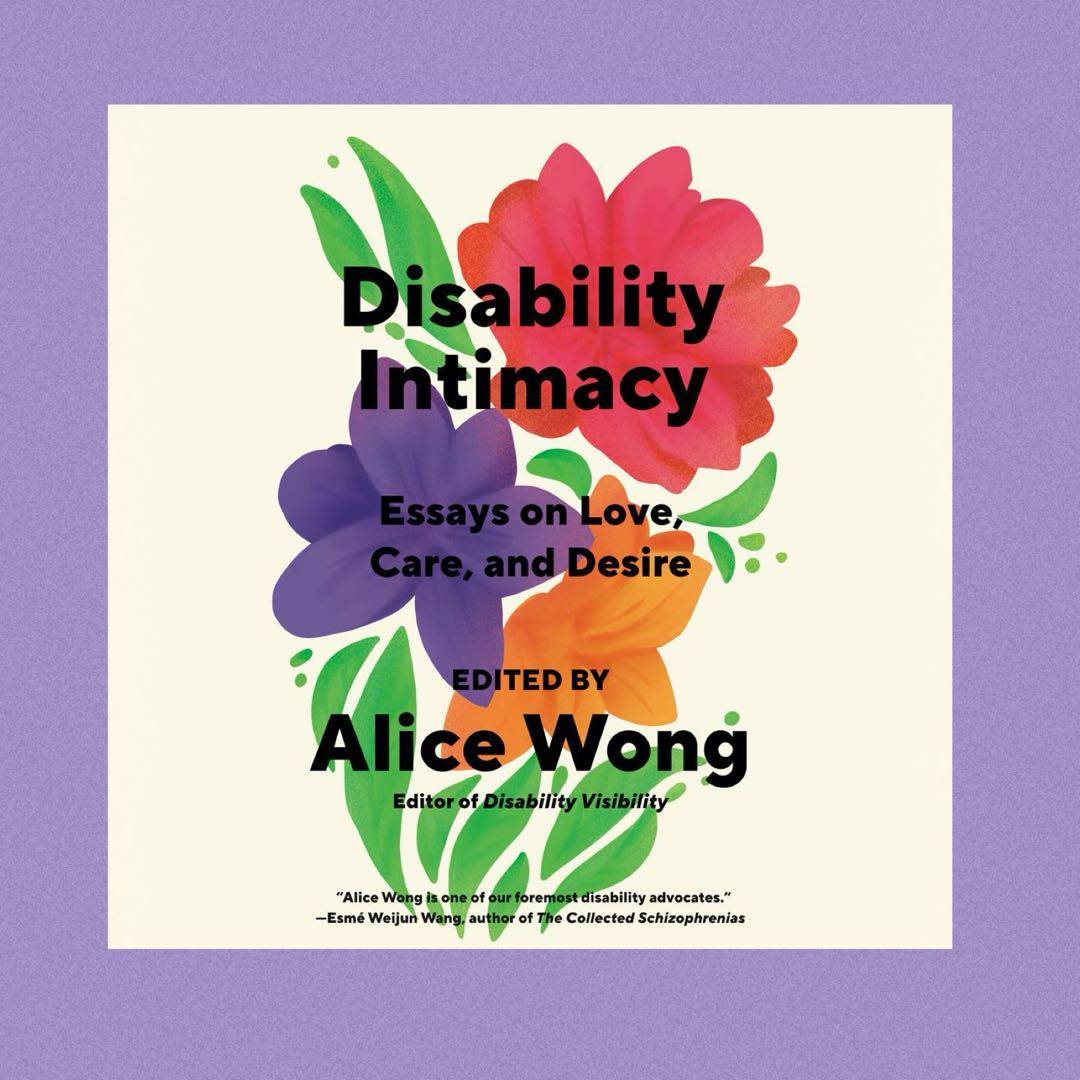
Intimacy isn‘t just romantic naked bodies touching each other; it‘s about affirming our value and existence, allowing ourselves to love and to be loved and to take up this space together and to make us feel not alone.
Intimacy isn‘t just romantic naked bodies touching each other; it‘s about affirming our value and existence, allowing ourselves to love and to be loved and to take up this space together and to make us feel not alone.

So is bibliophile intimacy a thing?
Like, what‘s the type of intimacy called when an author writes a thing and you feel so deeply and clearly seen and known and understood and you didn‘t think anyone else who had your thoughts existed?
Not in like a scary, vulnerable nerve wrecking way, but in like a beautiful, epic, awesome way?
What‘s THAT called?!?
As a high risk person, I am painfully aware of how profits and productivity matter more to those in charge than my survival does.
“The world asks us to be quieter, to do less, to be less. Be less colorful, more neutral, more predictable, more obedient, less spontaneous; to eschew “excessive” expression in favor of modesty, genuflect to the uniformity of it all unless we‘re in service of profit—the capitalist spectacle of entertainment. In conventional social settings, cultural norms demand that we don a bland façade…”
Together, we weave rows of hope and laughter and joy to balance out those of frustration and despair. We borrow with care, and we share with generosity. We spin and weave and tamp down row after row of love when we build community together.
Being thoughtful, intentional, and generous are acts of intimacy we can give to one another.
Intimacy is more than sex or romantic love. Intimacy is an ever-expanding universe composed of a myriad of heavenly bodies. Intimacy is about relationships within a person‘s self, with others, with communities, with nature, and beyond.

Read for #disabilitypride month in July, and just now getting around to reviewing here. I really appreciate the multiple perspectives here that helped open my eyes to the issues of disability intimacy. Wong is also the editor of Disability Visibility, which I have yet to read, and I wonder how similar they are. One of the most memorable perspectives from this was the plural person, describing their experiences with multiplicity.